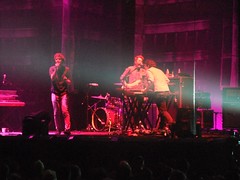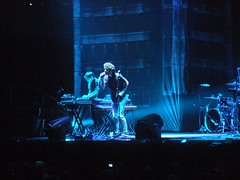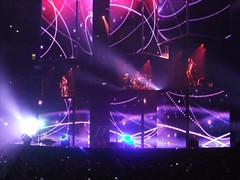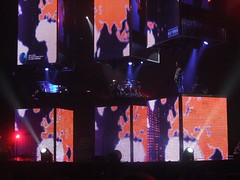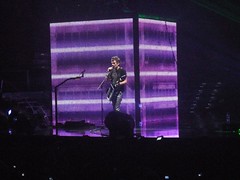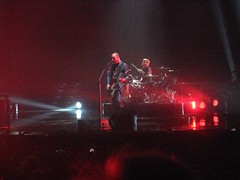 Kingem Records' has released a heartfelt tribute to the bygone Euro dance music of the 1980s. Italo disco, as it is more properly known, was one of the earlier forms of electronic dance music. U.N. Disco is a blend of old and new, updating the earlier inspiration into a Neo-Italo sound.
Kingem Records' has released a heartfelt tribute to the bygone Euro dance music of the 1980s. Italo disco, as it is more properly known, was one of the earlier forms of electronic dance music. U.N. Disco is a blend of old and new, updating the earlier inspiration into a Neo-Italo sound.Organizer Mark Zonda drafted his manifesto and describes it in the liner notes:
The rules to follow to be part of the project were simple:Each band participating brought their own take on the classic style, but the overall tone of U.N. Disco is not so far from modern dance music. This is largely because disco elements have been warmly embraced throughout dance pop lately. Some of the bands strayed from the purely electronic sound of the original Italo disco, throwing in a touch of guitar or bass, but most of the tracks preserve a dance pop/synthpop sound.
* lyrics had to deal with the future, the Celtic world, Russia, Japan, USA or nightlife fascinations, and above all not necessarily having to make sense.
* Rhythm had to be on 2/2 with a hit and a clap,
* the artists has to take part to the project moonlighting with a made up name related to a female Italian name or a reference to a classic book or tale.
The album starts off with Into the Night by "Silvia Paradiso" (Friday Bridge). The sound is jaunty synthpop. The breathy vocals are somewhere in the Missing Persons/Berlin style, while the music features some nice keyboard work. The lyrics also set the tone of looking back: "There's a place called Paderborn, in case that you forgot. Filled with moonlight, filled with promise...". The guitar part fits more with early American disco, but that's a small quibble.
One of the prime exemplars of the style was Hot Times by "Barry Bianco with Vanessa London" (Carlos Valderrama of Fitness Forever). The tongue in cheek Barry White reference shows they're not taking this too seriously, but the music calls that into question. It's a tight dance pop groove with a perfect disco bass line. Despite the steady drive of the beat, there's a languid feel. The male and female vocals have a good chemistry, each providing a different feel: serious and cool versus playful and expressive. If I had to pick the perfect Italo disco tagline, I'd be fairly tempted by "Intercontinental playboy, super macho".
Another interesting track is Camoflage Detection by "Nitelife USA" (Sean Rawls from Still Flyin'). It starts out as a reflective arpeggio sliding into a sparse synthpop progression. Before long, some experimental elements creep in. The vocals slide in and out of a hoarse falsetto and the song builds into a low-fi, clipped audio sound before it eventually self destructs. It's a story song, with interesting lyrics.
Zonda's first rule is probably one part of what made U.N. Disco an appealing album. The lyrical content through the songs was a lot more interesting than the fluff I think of in American disco. Musically, the modern dance pop sounds worked well, too. I'm not sure what the appropriate drink is, perhaps a Campari martini...












